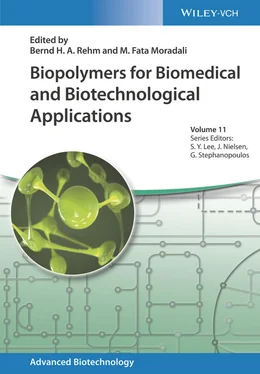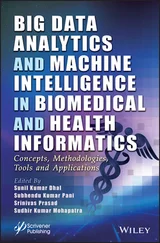54 54 Li, P., Liu, Z., and Xu, R. (2001). Chemical characterization of the released polysaccharide from the cyanobacterium Aphanothece halophytica GR02. Journal of Applied Phycology 13 (1): 71–77.
55 55 Ou, Y., Xu, S., Zhu, D., and Yang, X. (2014). Molecular mechanisms of exopolysaccharide from Aphanothece halophytica (EPSAH) induced apoptosis in HeLa cells. PLoS One 9 (1): e87223.
56 56 Zheng, W., Chen, C., Cheng, Q. et al. (2006). Oral administration of exopolysaccharide from Aphanothece halophytica (Chroococcales) significantly inhibits influenza virus (H1N1)‐induced pneumonia in mice. International Immunopharmacology 6 (7): 1093–1999.
57 57 Zhu, L., Zhang, F., Yang, L.‐J. et al. (2016). EPSAH, an exopolysaccharide from Aphanothece halophytica GR02, improves both cellular and humoral immunity as a novel polysaccharide adjuvant. Chinese Journal of Natural Medicines 14 (7): 541–548.
58 58 Di Pippo, F., Ellwood, N.T.W., Gismondi, A. et al. (2013). Characterization of exopolysaccharides produced by seven biofilm‐forming cyanobacterial strains for biotechnological applications. Journal of Applied Phycology 25 (6): 1697–1708.
59 59 Ahmed, M., Moerdijk‐Poortvliet, T.C.W., Wijnholds, A. et al. (2014). Isolation, characterization and localization of extracellular polymeric substances from the cyanobacterium Arthrospira platensis strain MMG‐9. European Journal of Phycology 49 (2): 143–150.
60 60 Challouf, R., Trabelsi, L., Ben Dhieb, R. et al. (2011). Evaluation of cytotoxicity and biological activities in extracellular polysaccharides released by cyanobacterium Arthrospira platensis. Brazilian Archives of Biology and Technology 54 (4): 831–838.
61 61 Majdoub, H., Mansour, M.B., Chaubet, F. et al. (2009). Anticoagulant activity of a sulfated polysaccharide from the green alga Arthrospira platensis. Biochimica et Biophysica Acta (BBA) ‐ General Subjects 1790 (10): 1377–1381.
62 62 Reichert, M., Bergmann, S.M., Hwang, J. et al. (2017). Antiviral activity of exopolysaccharides from Arthrospira platensis against koi herpesvirus. Journal of Fish Diseases 40 (10): 1441–1450.
63 63 Wang, B., Liu, Q., Huang, Y. et al. (2018). Extraction of polysaccharide from spirulina and evaluation of its activities. Evidence‐Based Complementary and Alternative Medicine 2018: 1–8.
64 64 Ge, H., Zhang, J., Zhou, X. et al. (2014). Effects of light intensity on components and topographical structures of extracellular polymeric substances from Microcoleus vaginatus (Cyanophyceae). Phycologia 53 (2): 167–173.
65 65 Ge, H., Xia, L., Zhou, X. et al. (2014). Effects of light intensity on components and topographical structures of extracellular polysaccharides from the cyanobacteria Nostoc sp. Journal of Microbiology 52 (2): 179–183.
66 66 Ahmadi, A., Zorofchian Moghadamtousi, S., Abubakar, S., and Zandi, K. (2015). Antiviral potential of algae polysaccharides isolated from marine sources: a review. BioMed Research International 2015: 1–10.
67 67 Kanekiyo, K., Hayashi, K., Takenaka, H. et al. (2007). Anti‐herpes simplex virus target of an acidic polysaccharide, nostoflan, from the edible blue‐green alga Nostoc flagelliforme. Biological and Pharmaceutical Bulletin 30 (8): 1573–1575.
68 68 Bafana, A. (2013). Characterization and optimization of production of exopolysaccharide from Chlamydomonas reinhardtii. Carbohydrate Polymers 95 (2): 746–752.
69 69 Guzmán, S., Gato, A., Lamela, M. et al. (2003). Anti‐inflammatory and immunomodulatory activities of polysaccharide from Chlorella stigmatophora and Phaeodactylum tricornutum: anti‐inflammatory and immunomodulatory activities. Phytotherapy Research 17 (6): 665–670.
70 70 Gudmundsdottir, A.B., Omarsdottir, S., Brynjolfsdottir, A. et al. (2015). Exopolysaccharides from Cyanobacterium aponinum from the Blue Lagoon in Iceland increase IL‐10 secretion by human dendritic cells and their ability to reduce the IL‐17+RORγt+/IL‐10+FoxP3+ ratio in CD4+ T cells. Immunology Letters 163 (2): 157–162.
71 71 Halaj, M., Paulovičová, E., Paulovičová, L. et al. (2018). Biopolymer of Dictyosphaerium chlorelloides – chemical characterization and biological effects. International Journal of Biological Macromolecules 113: 1248–1257.
72 72 Mishra, A. and Jha, B. (2009). Isolation and characterization of extracellular polymeric substances from micro‐algae Dunaliella salina under salt stress. Bioresource Technology 100 (13): 3382–3386.
73 73 Goo, B.G., Baek, G., Jin Choi, D. et al. (2013). Characterization of a renewable extracellular polysaccharide from defatted microalgae Dunaliella tertiolecta. Bioresource Technology 129: 343–350.
74 74 Trabelsi, L., Chaieb, O., Mnari, A. et al. (2016). Partial characterization and antioxidant and antiproliferative activities of the aqueous extracellular polysaccharides from the thermophilic microalgae Graesiella sp. BMC Complementary and Alternative Medicine 16 (1): 210.
75 75 Liu, X., Zhang, M., Liu, H. et al. (2018). Preliminary characterization of the structure and immunostimulatory and anti‐aging properties of the polysaccharide fraction of Haematococcus pluvialis. RSC Advances 8 (17): 9243–9252.
76 76 Ishiguro, S., Uppalapati, D., Goldsmith, Z. et al. (2017). Exopolysaccharides extracted from Parachlorella kessleri inhibit colon carcinoma growth in mice via stimulation of host antitumor immune responses. PLoS One 12 (4): e0175064.
77 77 Lee, J.‐B., Hayashi, K., Hirata, M. et al. (2006). Antiviral sulfated polysaccharide from Navicula directa, a diatom collected from deep‐sea water in Toyama Bay. Biological and Pharmaceutical Bulletin 29 (10): 2135–2139.
78 78 Torres, C.A.V., Marques, R., Antunes, S. et al. (2011). Kinetics of production and characterization of the fucose containing exopolysaccharide from Enterobacter A47. Journal of Biotechnology 156: 261–267.
79 79 Alves, V.D., Freitas, F., Torres, C.A.V. et al. (2010). Rheological and morphological characterization of the culture broth during exopolysaccharide production by Enterobacter sp. Carbohydrate Polymers 81: 758–764.
80 80 Kumar, S.A., Mody, K., and Jha, B. (2007). Bacterial exopolysaccharides – a perception. Journal of Basic Microbiology 47: 103–117.
81 81 Manivasagan, P. and Oh, J. (2016). Marine polysaccharide‐based nanomaterials as a novel source of nanobiotechnological applications. International Journal of Biological Macromolecules 82: 315–327.
82 82 Aimé, C. and Coradin, T. (2012). Nanocomposites from biopolymer hydrogels: blueprints for white biotechnology and green materials chemistry. Journal of Polymer Science Part B: Polymer Physics 50: 669–680.
83 83 Prasongsuk, S., Loytakul, P., Ali, I. et al. (2018). The current status of Aureobasidium pullulans in biotechnology. Folia Microbiologica 63 (2): 129–140.
84 84 Tabasum, S., Noreen, A., Maqsood, M.F. et al. (2018). A review on versatile applications of blends and composites of pullulan with natural and synthetic polymers. International Journal of Biological Macromolecules 120: 603–632.
85 85 Cheng, K., Demirci, A., and Catchmark, J.M. (2011). Pullulan: biosynthesis, production, and applications. Applied Microbiology and Biotechnology 92: 29–44.
86 86 Singh, R.S., Saini, G.K., and Kennedy, J.F. (2008). Pullulan: microbial sources, production and applications. Carbohydrate Polymers 73 (4): 515–531.
87 87 Giustina, G.D., Gandin, A., Brigo, L. et al. (2019). Polysaccharide hydrogels for multiscale 3D printing of pullulan scaffolds. Materials and Design 165: 107566.
88 88 Taskin, M., Erdal, S., and Canli, O. (2010). Utilization of waste loquat (Eriobotrya japonica Lindley) kernels as substrate for scleroglucan production by locally isolated Sclerotium rolfsii. Food Science and Biotechnology 19: 1069–1075.
Читать дальше












